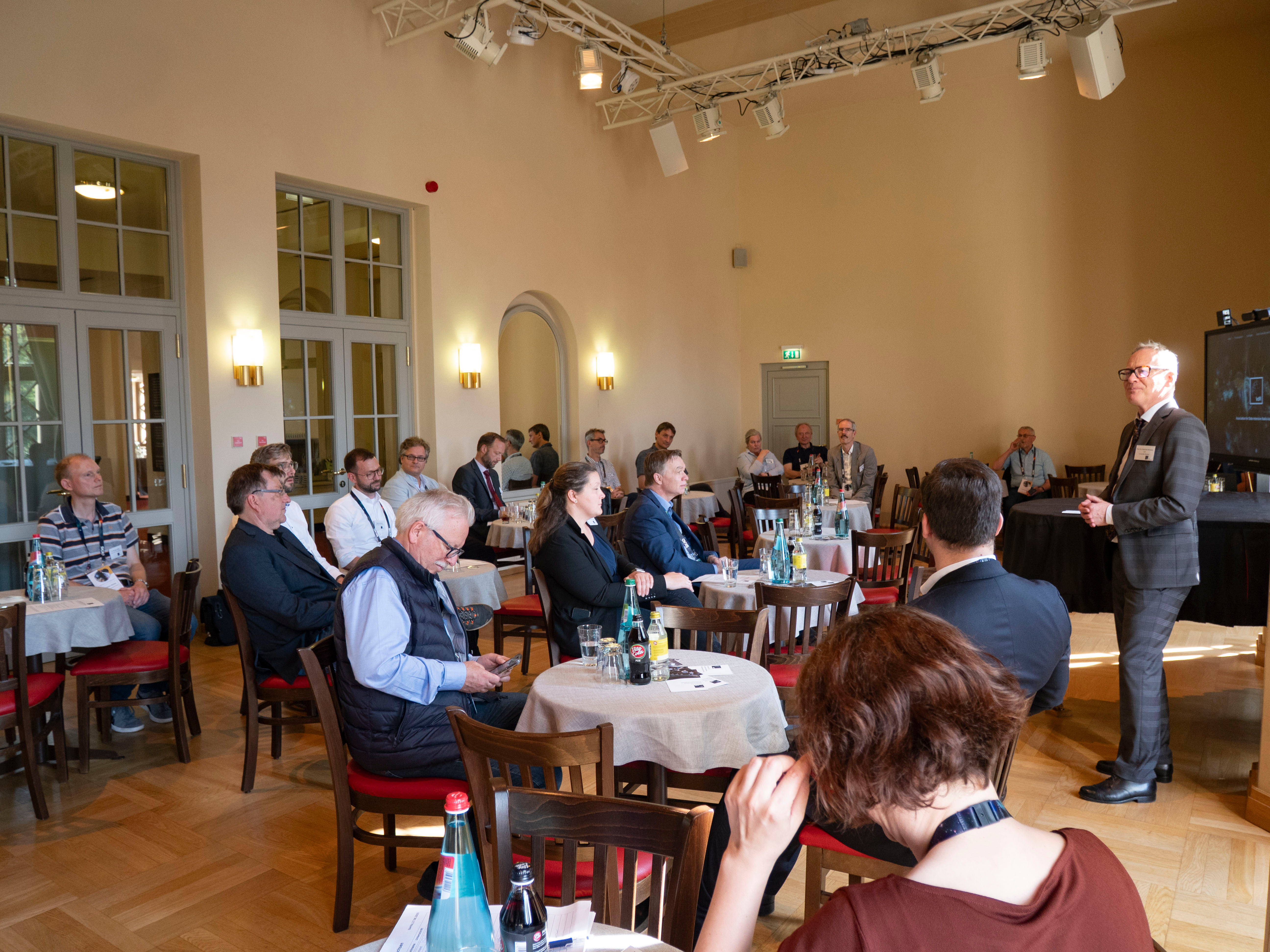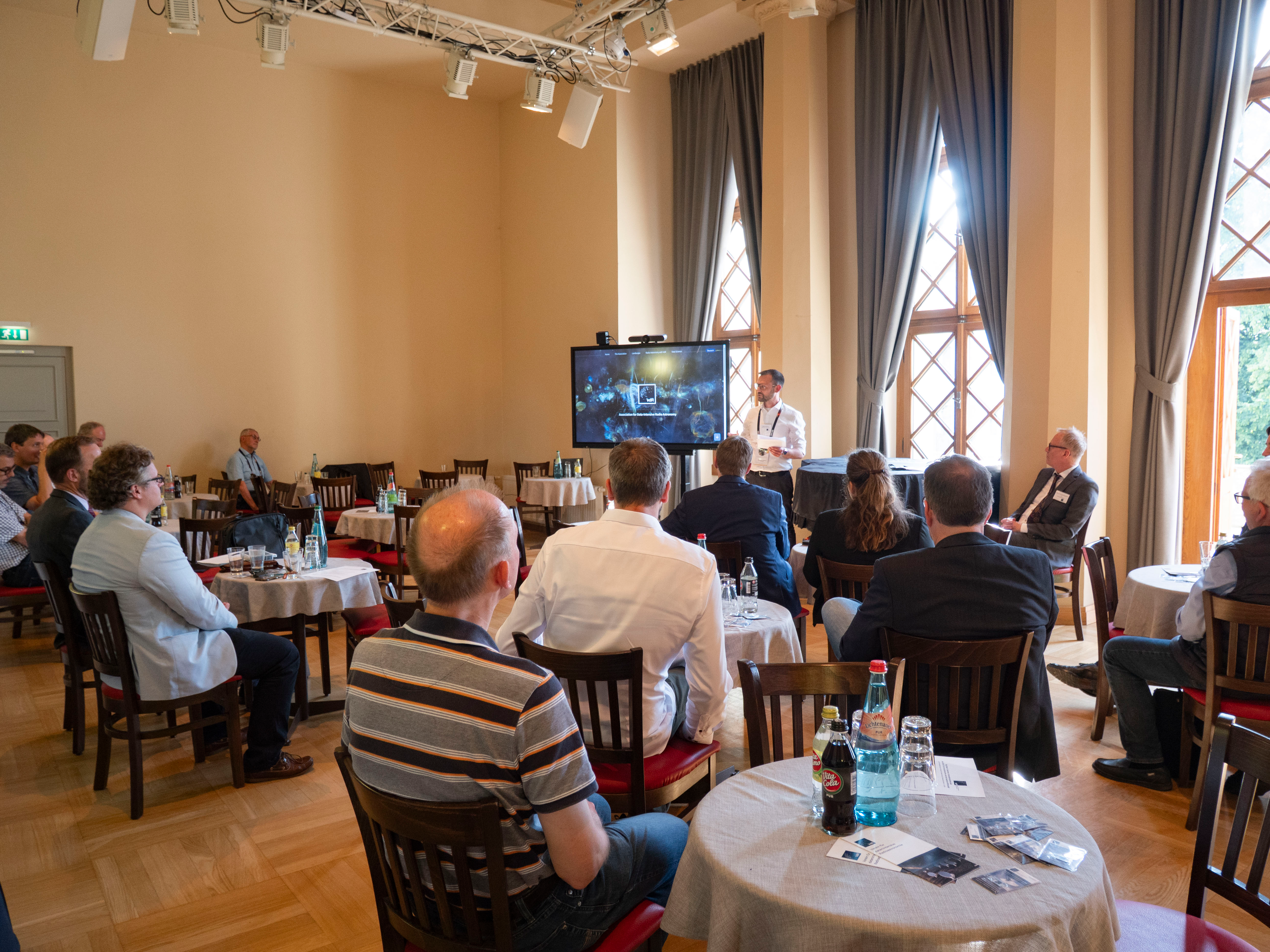The Association for Data-Intensive Radio Astronomy (VdR) hosted the event “Big Data in Saxony” at the Gerhart-Hauptmann-Theater in Görlitz, bringing together representatives from German industry, the Federal Ministry of Research, Technology and Space, and the scientific community to explore the innovation potential of the Square Kilometre Array Observatory (SKAO).
Prof. Dominik Schwarz, second chairman of the Association for Data-Intensive Radio Astronomy and professor at the University of Bielefeld, opens the meeting and presents the activities of the association.
Photo: VdR

Prof. Michael Kramer, Director at the Max Planck Institute for Radio Astronomy in Bonn (MPIfR), emphasized the crucial role of industry in scaling up the production of receivers and antennas designed by astronomers. Industrial collaboration, he noted, is essential for strengthening Germany’s involvement in large-scale international research infrastructures like the SKAO.
In a video address, Federal Minister Dorothee Bär highlighted the significance of the SKAO for the region, historically associated with coal mining. She pointed to the German Center for Astrophysics (DZA), based in Görlitz, as a gateway to “look to the sky rather than underground,” offering new opportunities for regional industry to engage with cutting-edge science. “It’s time to think big - square kilometre big,” she remarked.
Patrick Hartmann, Council delegate to the SKAO from the Federal Ministry, praised the strong turnout at the SKAO Science Meeting held in Germany, which attracted over 500 participants. He underlined the value of education and knowledge transfer in driving long-term benefits from projects like the SKAO.

Matthias Reichert, OHB Digital Connect GmbH, presents the company's expertise and motivation to participate in the SKAO developments.
Photo: VdR
Stefan Wagner, Head of the Astrophysics and Radio Astronomy division at DZA, echoed these sentiments. He described the SKA as a driver for both technological innovation and scientific discovery, highlighting the data science challenges it poses as a unique opportunity to train the next generation of skilled professionals in Germany.
Phil Diamond, Director-General of the SKAO, shared an update on the Observatory’s progress, including major infrastructure developments underway in South Africa and Australia. He stressed the importance of technological and software innovation to support the SKAO’s scientific goals, and cited examples from other countries where industry has thrived through involvement with the SKAO. Diamond expressed confidence that Germany’s contribution will grow significantly through ongoing roadmap efforts.
Matthias Reichert, Mechanical Engineer and Project Manager at OHB Digital Connect GmbH, presented OHB’s active role in radio and millimetre-wavelength astronomy. He emphasized the company’s expertise in managing large-scale scientific projects and its successful partnership with MPIfR on the MeerKAT+ project - a precursor to SKA-Mid. He noted the tangible benefits the SKAO brings to both Germany and the Saxony region.

Dr. Robert Haas (IBM Research Europe) in conversation with Prof. Stefan Wagner (DZA), Prof. Michael Kramer and Dr. Gundolf Wieching (MPIfR).
Photo: VdR
Torben Ziegert, International IT Sales Professional at IBM Technology, recognized the rapid development of technology and sciences and the challenges it poses on companies. He recalled the role of IBM in the mission to Moon and the company's commitment to ambitious projects such as the recent assembly of the largest computer in Europe in Jülich.
Dr. Robert Haas, Department Head at IBM Research Europe, listed the key challenges from radio astronomy and SKAO that can be addressed by IBM: 1) necessity for high-quality, cost-efficient long-term storage, 2) data extraction and processing enabled by AI innovations, in particular so-called in-memory computing, 3) the new era of quantum computing, which in a few years will provide advantage over the classical methods. He assured the audience that radio astronomy is a great field to develop and use the above methods, which will open up a true new era in astrophysics.
During the remaining part of the event, the guests had the opportunity to discuss future collaboration in the context of the German participation in SKAO.
Contact
Representative of the VdR: